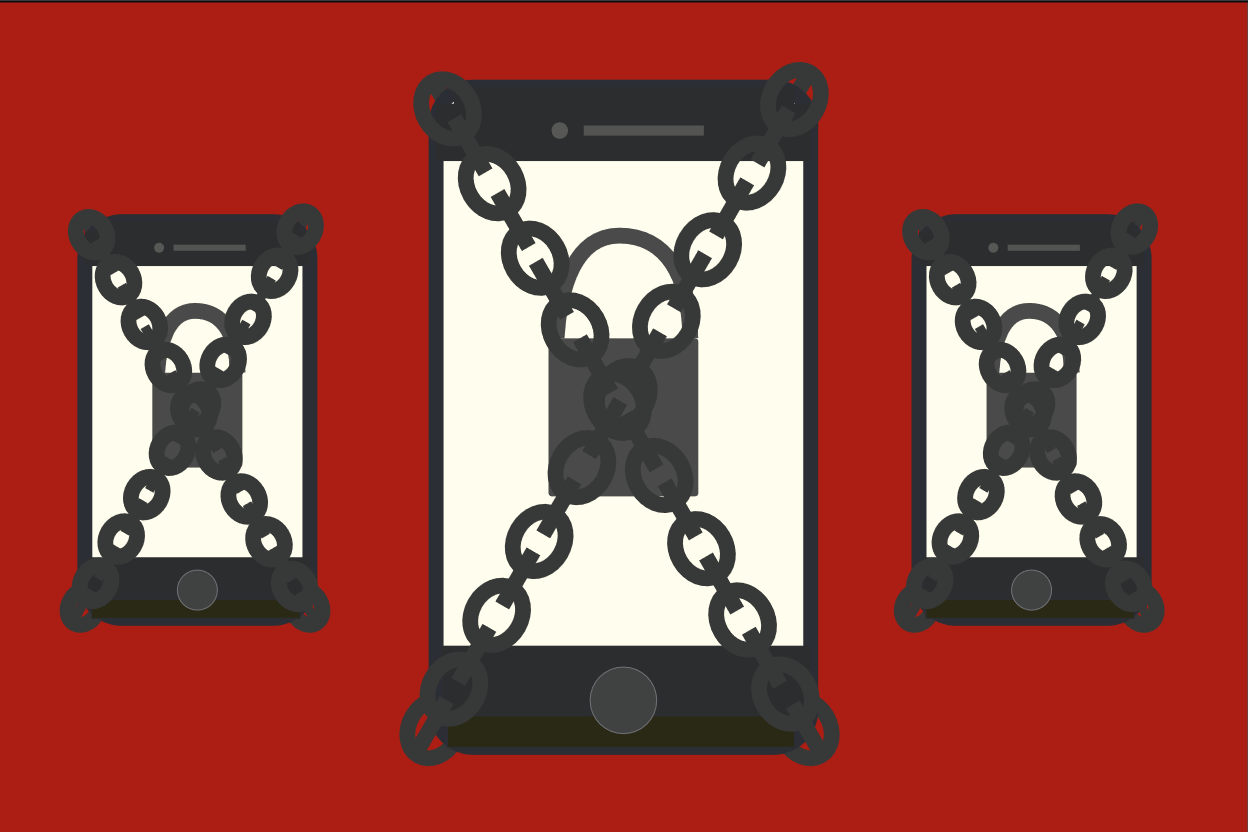The statistics on how much time teenagers are spending on their phones seems to change all the time, with some research suggesting a common average of over eight hours a day. And then some say it might be closer to seven and a half hours. And others believe it may even be a little bit less? Despite that, one thing is for sure: this is just too much for one day, especially when nine of those hours are supposed to be spent in school.
Mathematicians would point out that if a teenager is sleeping eight hours a day (which they don’t), that would still leave seven hours outside of school to be on their phones. Since that assumes no time is spent off of their phones, those mathematicians will be ignored.
Going off of this inconsistent data, along with what can only be assumed were countless reports from teachers about in-class phone usage, Dos Pueblos High School unveiled its new policy this year: cellphone hotels. They’re a sure way to keep students off their phones and engaged with class through other, school-sanctioned electronic devices.
It’s the perfect plan. If teenagers don’t have their phones, then they can’t be on their phones. The only problem comes from every other part of this policy.
“Usually, if you ask, if you really need to text someone … you’re allowed to,” Nico Welton (10) said. “So it’s not like they’re stealing it from you, it’s that you are being forced to put it somewhere. So, I don’t think it’s necessarily a good thing, but I do think it’s having the results that they wanted.”
The new policy is one that blatantly seeks to control student property. Cellphones aren’t contraband, they aren’t inherently dangerous, and they aren’t school-provided, but because the policy aims to target minors, none of that matters.
“We do that already,” said DPHS Principal Bill Woodard. “You can’t wear a shirt with profanity on it. You can’t bring drugs or alcohol to school … The ethics around it, around taking student property … is aligned with other prohibitions or regulations we have around students.”
Not only that, but the school isn’t even taking responsibility for the property they are in control of. As Woodard said, students “assume the risk” for what happens to their phones when they’re in the school’s possession, referencing the education code which clarifies the district’s liability.
“Bringing a cellphone to school is not a requirement,” Woodard said. “If you choose to bring a cellphone to school, you run the risk … The district has clarified that teachers won’t be held liable for that. That was a big issue in the past, like, ‘I want to collect the phones, but I don’t want to be held liable.’”
Most phones cost more than $400. That’s 25 hours working a minimum wage job in California if that money isn’t spent on anything else, such as food, gas, or state taxes.
Those taxes should actually be specifically emphasized, because of California’s involvement with the cellphone hotels. This policy isn’t coming at a random time, nor is it just happening at DPHS. Governor Gavin Newson is currently going through the process of mandating classrooms to have cellphone use policies.
However, that mandate won’t affect classes until 2026, if it’s passed. As for the current system, Woodard encourages students to speak out about the policy.
“We’re still figuring this out as we go along,” Woodard said. “I do want to hear from students. I don’t want you to feel like you don’t have a voice. If this isn’t working, why isn’t it working?”
Some students already have opinions about what should be done to change this policy, including if it should stay or go. As responses to student cellphone use become more and more common, what should be paid attention to are the voices of those most affected.
“I personally feel like it’s a good development, but it can definitely be improved,” Mika Nasta (12) said. “As the world continues to evolve and technology continues to evolve, we need to evolve with it … Sometimes people need music [to focus]. I think the accessibility aspect can be really improved.”
One of the other main problems with the cellphone hotels is what happens between classes. As soon as students get permission to have their phones again, their instinct is to turn them on, check notifications, and see everything they’ve missed in the past 80-90 minutes.
“Everyone is just clamoring around it,” Welton said. “It’s chaotic … I don’t really pay attention to anyone, but the few times I have, they’ve definitely been checking their phones, which is what I do, too.”
The cellphone hotels require students to be handling their phones multiple times a day as they switch classes. What’s the point of putting a phone away when it just needs to be taken out again in a few minutes? It’s easier to just keep it in a backpack all day.
Still, there is a deeper problem with the cellphone hotels than taking phones out of student backpacks; there’s still the issue of whether or not they’re necessary at all.
In the Noozhawk article Santa Barbara High Schools Crack Down on Phones in Class With Cell Hotels, Woodard is said to be motivated, “by the amount of research saying that students were distracted by their phones in class.” The research Noozhawk provided is a singular article citing teachers as their source on student phone use. The data from teenagers was only if they thought phones were beneficial, not if they used their phones during school.
That doesn’t mean there isn’t plenty of research. There’s published statistics surrounding how distracting notifications are, which can be read about in the article, “Smartphones are distracting even when you’re not using them” and the article, “How Smartphones Create Distractions in the Classroom”, but those aren’t the only data on student phone use.
Common Sense Media’s thorough survey of student phone use showed that 97 percent of students use their phones during school for a median average of 43 minutes a day. That’s seven minutes more than the DPHS lunch period.
Not only that, but they also found that the 59 percent of teens who had their phones on during the night, meaning seven to eight hours of screen time, was heavily made up by hours of music played through YouTube.
That isn’t to say that nobody is on their phone during class. Obviously, some people are. Welton, Clare Carey-Pisani (9), Nasta, and Woodard all reported seeing phone usage during class time. The policy isn’t just in response to student phone use, but also the strain it could put on teachers.
“[Teachers] had a fear of students asking to go to the bathroom because they didn’t really need to go to the bathroom,” Woodard said. “They don’t have to battle anymore.”
Is phone usage a problem? Yes, but so are pop quizzes, letter grades, how early school starts, dress codes, and so many other practices that haven’t seen a policy change in years. If this is about education and not controlling students, maybe California can start addressing some other systemic issues before jumping to the removal of private property.
Edited Sept. 9, 2024 for clearer word choice.








